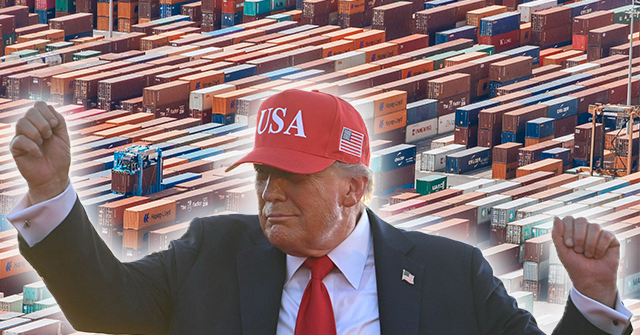The Great Trade Reversal: Trump’s Tariffs Are Gaining Fans in Academic Economists
President Trump has long believed that America’s economic leverage has been systematically squandered by its own ruling class. For this he has been accused—by economists, editorial boards, and the entirety of Davos—of misunderstanding trade. But the latest word from the economics profession is… not so fast.
A new CESifo working paper, blandly titled “Making America Great Again? The Economic Impacts of Liberation Day Tariffs,” lands with all the drama of a footnote—until you read what it actually says. If the U.S. can impose tariffs without sparking retaliation, it can come out ahead. Higher wages. Smaller trade deficit. Slightly lower taxes. A net gain in welfare. That’s not a MAGA slogan. That’s a math-based result.
The study, authored by economists from UC Davis, the Norwegian School of Economics, Indiana University, and the University of Milan, builds a global trade model to simulate Trump’s April 2 tariff policy—what he called “Liberation Day.” The tariffs include a 10 percent base rate, with surcharges for countries that run persistent trade surpluses with the U.S. — 20 percent for the European Union, 54 percent for China, etc. The CESifo authors run the numbers and conclude: If foreign governments don’t retaliate, the U.S. gains. The trade deficit drops by 18 percent. Welfare ticks up by 1.13 percent. Tariff revenue offsets income taxes. Even employment nudges higher.
Of course, there’s a catch—one that the economists are at pains to highlight. Retaliation reverses the gains. If the EU or China responds in kind, the U.S. loses. The benefits evaporate. Prices rise. Output and employment fall. It’s all in the model.
This would be the part where the policy gets shelved — except Trump has read the same model and responded accordingly.
Trump’s Tariff Letters Warn Against Retaliation
On Monday, Trump sent letters to Japan, South Korea, and other major trade partners warning that any retaliatory tariffs will be met with percentage-point-for-percentage-point increases on their own exports. In other words, retaliation now has a cost. Trump is signaling what economists call a dynamic commitment strategy. In plain English: Don’t even think about it.
This is the rarely acknowledged genius of Trump’s trade policy. It isn’t protectionist in the classical sense. It’s economic nationalism, yes — but of the Hamiltonian variety, not the caricature painted by his critics. And it turns out that when you run the numbers, as these economists have done, the logic holds up—provided you can make your threats stick.
There’s even a theoretical cherry on top. The CESifo model identifies the “optimal tariff” as a flat 19 percent across all imports — not 10 percent, not 54, not tailored to bilateral deficits. Trump’s tariffs, designed to look reciprocal, deviate from this optimum. But even they generate gains—again, if other countries don’t retaliate. And when the dust settles, it is likely that Trump’s tariffs will wind up being something close to the 19 percent rate the economists think works best.
The paper doesn’t endorse Trump’s trade strategy, but it might as well have. It lays out the strategy: impose tariffs, shift the terms of trade, use the revenue to cut distortionary taxes, and avoid retaliation. Trump, it turns out, is already following the playbook. And now he’s trying to ensure others follow it too.
Whether this approach succeeds is still uncertain. China has its own playbook. The EU is implacable. The World Trade Organization is a potted plant. But the intellectual scaffolding for Trump’s policy is now in place, built not by political appointees but by credentialed economists with publication records.
So, the next time someone says Trump doesn’t understand trade, feel free to hand them a copy of the CESifo paper — or better yet, a copy of Monday’s letters.
Because whatever else it is, this is a trade policy with a model behind it, a strategy in front of it, and a threat to make it real.
Read the full article here
